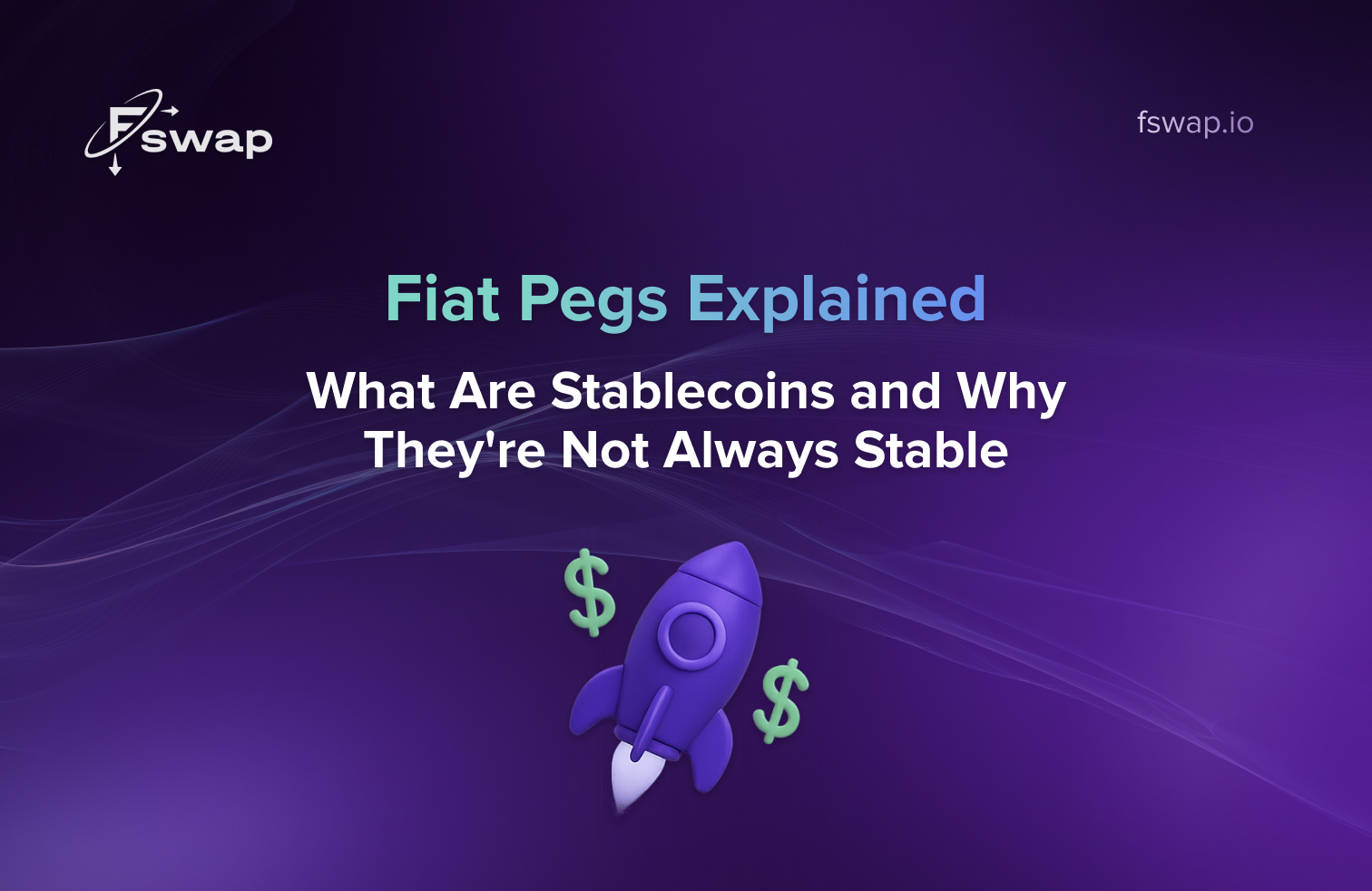

Fiat Pegs Explained: What Are Stablecoins and Why They're Not Always Stable

In the world of cryptocurrency, stablecoins are meant to bring peace of mind. They're called "stable" because they’re usually tied to a real-world currency like the US dollar. But are they truly stable? Let’s break it down.
What Is a Stablecoin?
A stablecoin is a type of cryptocurrency that’s designed to keep a steady value — most often pegged 1:1 to fiat currencies like USD or EUR.
Popular examples:
- USDT (Tether)
- USDC (USD Coin)
- DAI
- TUSD
The goal is simple: offer the benefits of crypto (speed, decentralization) without the price volatility of coins like Bitcoin or Ethereum.
How Do Stablecoins Stay Stable?
There are different mechanisms behind stablecoins:
- Fiat-Backed: Each coin is backed by real money in a bank (like USDC or USDT).
- Crypto-Collateralized: Backed by other cryptocurrencies (like DAI, which uses Ethereum).
- Algorithmic: Stabilized through code and smart contracts — no real backing, just supply/demand management.
Why Stablecoins Aren’t Always 100% Stable
Even though they aim to be stable, real-world events can shake their value. Here’s why:
- Regulatory pressure: If a government cracks down on a stablecoin issuer, users panic. (e.g., SEC pressure on USDT)
- Banking issues: If the reserve bank fails or loses liquidity, the stablecoin might “depeg.”
- Smart contract bugs: In algorithmic models, code bugs can crash the value.
- Market panic: Even rumors can cause users to sell quickly, leading to volatility.
Real-Life Examples
- In 2022, TerraUSD (UST) collapsed, losing its $1 peg and wiping out billions.
- Some stablecoins have briefly dropped to $0.90 or less during market crashes.
How to Stay Safe When Using Stablecoins
- Use well-known coins like USDC or USDT with high liquidity.
- Watch for regulatory news.
- Don’t hold your life savings in just one stablecoin.
- Always exchange on trusted platforms.
For quick and secure swaps between USDT, USDC, DAI, and more — Fswap.io offers a fast, no-registration service supporting 4000+ tokens across multiple blockchains.
Final Thoughts
Stablecoins are useful, but not perfect. Understanding how they work — and what risks they carry — helps you make smarter choices in the crypto space. Think of them as “less volatile,” not “risk-free.”

